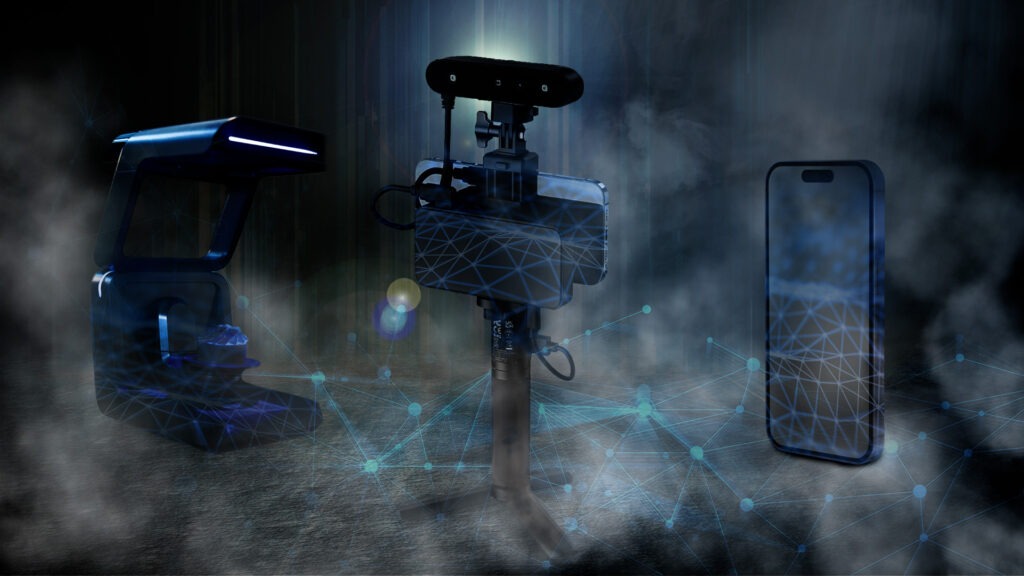Facility management is undergoing a transformative shift, powered by the potential of Artificial Intelligence (AI). While automation has brought considerable efficiency, AI is poised to take the industry to a new level.
The Journey from Automation
The Role of Automation in Facility Management
The introduction of automation into facility management was a game-changer. It shifted the paradigm from labor-intensive operations to efficient, mechanized processes. Automated systems took over repetitive, manual tasks, freeing up human operators for more strategic roles.
Automation became the backbone of areas like HVAC systems (heating, ventilation, and air conditioning), lighting, security, and maintenance scheduling. From automatically adjusting temperature and lighting conditions to scheduling regular maintenance tasks, automation brought about a new era of efficiency.
Limitations of Automation
While automation has undeniably been a game-changer in facility management, it doesn’t come without its fair share of challenges, mainly when dealing with older, pre-existing buildings. Many of these facilities, due to their age or the lack of foresight in design, lack comprehensive digital data such as Building Information Modeling (BIM). This absence of BIM – a crucial element for streamlining management and automation efforts – poses a significant hurdle. Implementing automation without such data requires a labor-intensive process of surveying and digitizing the physical space, a venture that can be both time-consuming and financially burdensome.
Even when these challenges are overcome and automation is successfully implemented, it is not without its inherent limitations. Automation excels in performing repetitive tasks and adhering to a strict set of rules, but it struggles when faced with complex, unpredictable situations that often arise in facility management. This could be a sudden system failure, a significant shift in usage patterns, or unprecedented incidents – in such scenarios, automation may not be able to provide an optimal response due to its inability to understand, learn, and adapt. This limitation necessitates human intervention, and, more importantly, signals the need for a more intelligent solution. Thus, we find ourselves on the brink of the next revolution in facility management: Artificial Intelligence (AI).
The Advent of Artificial Intelligence (AI)
AI’s Entry into Facility Management
Considering the limitations of automation, artificial intelligence (AI) emerges as the next logical step in the evolution of facility management. AI can address the challenges that arise with the automation of older buildings lacking sufficient digital data. With advanced algorithms and learning mechanisms, AI can effectively ‘understand’ the physical environment and even predict and respond to complex, unpredictable situations.
Furthermore, AI can significantly reduce the complexity and workload associated with managing buildings. AI can gather and analyze data from various sources and formats to identify patterns and make informed decisions. It can help increase efficiency, reduce costs, and prolong the lifespan of facilities.
For instance, AI-powered software can use existing data to recognize patterns and predict when and where maintenance might be needed. This allows facility managers to be proactive and address issues before they cause significant disruptions. AI can also help improve energy efficiency by optimizing the HVAC system to save energy and enhance comfort.
With all these capabilities, AI is contributing to revolutionizing facility management and leading it into the era of ‘smart’ buildings.
Challenges in AI Adoption
Although AI promises a transformative impact on facility management, certain challenges need to be addressed. Primarily, the implementation of AI signifies a considerable initial investment, which includes the cost of incorporating AI-based systems and training the workforce to utilize these new technologies.
A specific challenge arises with older or renovated buildings, which often lack up-to-date digital representations of their layout and infrastructure. AI applications rely heavily on this data for optimal performance; thus, the absence of accurate data can hinder their effectiveness. This is where Metaroom’s innovative solution comes into play. With its advanced 3D floor planning feature, facility managers can scan multiple rooms, creating comprehensive floor plans and locating safety features such as smoke detectors, exit signs, and fire extinguishers. The high-quality, precise scans can then be exported to many different file formats and edited on the Metaroom Studio platform, significantly reducing the time and effort required for traditional methods.
Concerning data security and privacy, an increased risk of data breaches exists with AI systems that collect and analyze extensive amounts of data. It is thus vital for organizations to prioritize data protection and comply with data privacy regulations.
A shift towards AI is not just a technological transition but also requires a cultural change within organizations. Employees may resist AI-driven changes due to fears of job loss or significant alterations in their job roles. Therefore, managing change and including employees in the AI journey is as important as the technological implementation itself.
Lastly, AI, like any technology, is not infallible. There can be instances of incorrect predictions or overlooked patterns, particularly in complex or unprecedented situations. As such, while AI can significantly improve facility management operations, human oversight remains crucial. Metaroom, being intuitive and easy to use, bridges this gap between technology and usability, making it a cost-effective, all-in-one solution for both the present and future of facility management.
Real-Life Examples of AI in Facility Management
1. Predictive Maintenance: With the help of AI, facility managers can predict when equipment may fail or require maintenance. For instance, platforms like IBM’s Tririga use AI to analyze vast amounts of data from various sources to predict potential equipment failures. Metaroom also contributes to this domain, offering 3D floor planning that allows facility managers to keep track of safety equipment locations and effortlessly identify maintenance requirements.
2. Energy Efficiency: AI can optimize energy use in facilities. Honeywell’s Forge platform, for example, uses machine learning to analyze and optimize energy consumption. Metaroom complements these efforts with comprehensive scans of a building, offering precise data about the building’s layout and conditions for smarter energy conservation decisions.
3. Space Optimization: Through AI, facilities can make better use of their space. Tools like IBM’s Tririga can analyze occupancy data to provide insights into space utilization. Similarly, Metaroom’s 3D floor planning gives facility managers a detailed view of the facility’s spaces, enabling space optimization based on real-time, accurate data.
4. Security and Surveillance: AI can enhance the safety and security of facilities. Honeywell’s Forge, for instance, uses AI for intelligent video analytics to detect unusual activities. Metaroom contributes here as well, with its ability to locate safety features like smoke detectors, exit signs, and fire extinguishers in the 3D plan.
The Future of AI in Facility Management
Convergence of AI with Other Technologies
The future of facility management lies in the convergence of AI with other emerging technologies like the Internet of Things (IoT), robotics, and blockchain. This convergence will lead to facility management becoming more predictive, personalized, and efficient.
For example, AI coupled with IoT can enable smart buildings that can autonomously manage and optimize energy usage, security, and maintenance. This will not only lead to significant cost savings but also create a better, more comfortable environment for the occupants.
Challenges in the Future
However, this promising future comes with its share of challenges. As facility management becomes more interconnected and data-driven, data privacy and security become crucial. Also, the need for skilled personnel who can manage these sophisticated AI systems will be a key concern.
Preparing for an AI-Driven Future
Role of Facility Management Professionals
To harness the benefits of this AI-driven future, facility management professionals need to equip themselves with the right skills and knowledge. They need to familiarize themselves with AI tools and technologies. Organizations should invest in training their employees to understand and manage these advanced systems.
Role of Industry Leaders and Professional Organizations
Industry leaders and professional organizations also have a vital role to play in this transition. They can provide the necessary resources, platforms, and opportunities for learning and collaboration. By doing so, they can help professionals navigate the challenges and seize the opportunities offered by AI.
Conclusion
AI’s integration into facility management isn’t just a trend; it’s a fundamental shift in our approach. Solutions like IBM’s Tririga, Honeywell’s Forge, Metaroom App, and Metaroom Studio are transforming the way we manage and operate our facilities, making them smarter, more efficient, and more responsive. We’re moving towards a future where our facilities are not only managed by us but are actively assisting us in their management. The question isn’t about whether we should embrace AI, but how quickly we can adapt to and excel in this AI-driven future.





